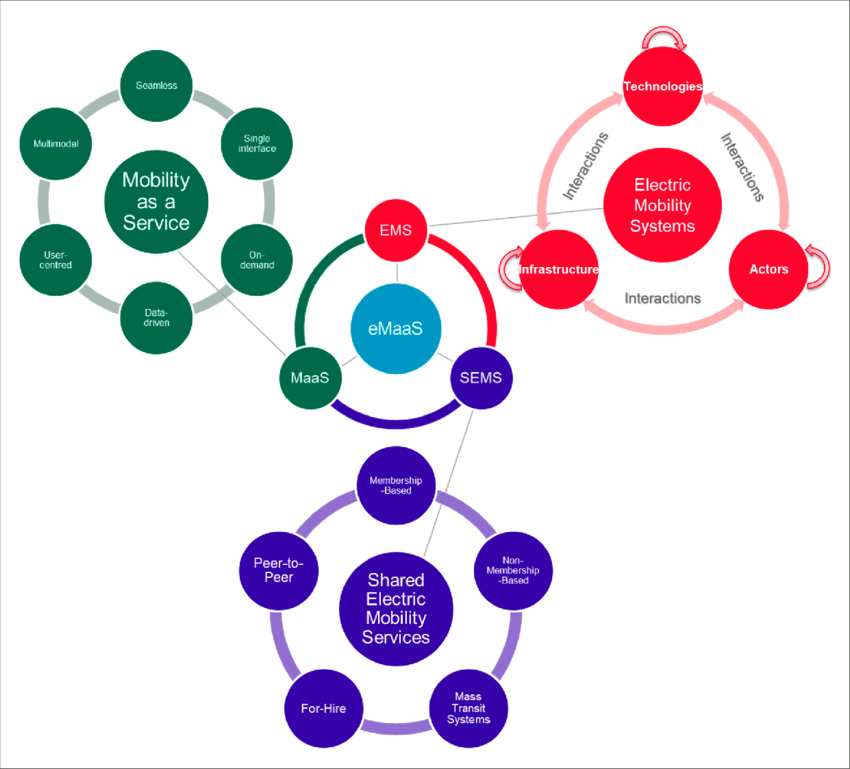About

eMaaS: Intelligent Electric Mobility as a Service System
Revolutionizing Urban Transportation, Driving a Low-Carbon Future
eMaaS (Electric Mobility as a Service) is a next-generation intelligent mobility and energy system built on three core concepts: "data-driven, clean energy, seamless integration." Aiming to become one of the first platforms globally to achieve "air-ground-energy" network collaborative operation, Haylion eMaaS reconstructs urban transportation ecology by integrating the Electric Mobility Cloud Platform (EMC), intelligent electric vehicles (EV), and Mobility as a Service framework (MaaS). Its goal is to drive the transformation of transportation energy from "single service delivery" to "full-chain sustainable development" through systematic cost reduction and efficiency improvement.
Core Advantages
Technical Leadership: Striving to be the first globally to achieve a technical closed-loop of "low-altitude traffic management algorithms + virtual power plant regulation + carbon footprint full traceability," breaking through multi-modal collaboration bottlenecks.
Scenario Coverage: Establishing vertical integration capabilities in low-altitude aircraft, ground electric vehicles, and distributed energy networks.
Strategic Foresight: Deeply aligned with China's low-altitude economy and "dual carbon" policy opportunities, with industry-leading energy management core technologies.
The eMaaS system consists of three core components that collectively achieve intelligent and sustainable electric mobility.
EMC (Electric Mobility Cloud Platform): Data-Driven Intelligent Hub
Real-time Monitoring: Tracking dynamic and static data of terminal electric vehicles.
Predictive Optimization: Ultra-short-term power generation/load forecasting based on algorithms, supporting dynamic power dispatch.
Virtual Power Plant (VPP): Aggregating distributed photovoltaics, energy storage stations, and vehicle batteries to participate in grid peak shaving and valley filling.
Open Interface: Supporting efficient access for government regulatory systems and third-party service providers.
EV (Electric Vehicles): Highly Compatible and Scalable Mobility Solution
New Energy Electric Taxi Fleet: Converting new energy brand models, installing onboard intelligent terminals, applied to Hong Kong's "Bumblebee Love Fleet" operations.
Intelligent Charging/Swapping Equipment: Automatic charging pile scheduling, compatible with 95% of electric vehicle models on the market, applied to Shenzhen Futian Yinli Center's light-storage-direct-flexible supercharging station project.
High-Compatibility Terminal Access: Achieving unified dispatch and data interaction for multi-brand electric vehicles through self-developed onboard terminals.
MaaS (Mobility as a Service Framework): Seamless Connection Between Users and Scenarios
User Interaction Layer: Integrating "air + ground" ride-hailing, charging reservations, and carbon credit management
Service Aggregation Layer: Capable of connecting 50+ third-party service providers (such as Gaode Map)
Operation Dispatch Layer: Committed to developing AI dynamic route planning
Data Hub Layer: Processing multi-level, multi-dimensional transportation and energy data
eMaaS's top-level design adopts the "3E+1C" framework, comprehensively covering four dimensions: electrification, efficiency, ecosystem, and cloud control.
Core Product System
PV-BOX Photovoltaic System: Modular photovoltaic energy storage integration (compatible with rooftop/vehicle/low-altitude airport deployment), applied to distributed energy supply, light-storage-charging integrated stations.
VPP-BOX Virtual Power Plant: Supporting multi-source aggregation (photovoltaic + energy storage + vehicle batteries), rapid grid response, participating in power peak shaving and green power trading.
EMS-BOX Energy Management System: Committed to developing AI-driven energy optimization control (supporting cold-heat-electric multi-energy coupling), applied to multi-scenario energy panorama management.
Top-Level Framework
Electric (Electrification): Full-chain green drive
Efficiency (Efficiency): "Air-ground-energy" deep collaboration
Ecosystem (Ecosystem): Open alliance win-win
Cloud (Cloud Control): Data platform empowering the entire domain
eMaaS does not pursue conceptual disruption, but rather drives urban mobility toward a more efficient and greener future through practical technical integration and scenario validation.
Energy Efficiency Leap
Green Power Consumption: Through virtual power plant dispatch, regional renewable energy consumption rate improvement.
Technical Capability Barriers
Algorithm Module: Multi-objective optimization algorithms, balancing energy consumption, timeliness, and cost.
Future Strategic Development
Scenario Deepening: Expanding to more cities in the Greater Bay Area by 2025, laying out Asia.
Technical Extension: Developing universal edge computing terminals to lower the access threshold for small and medium-sized operators.
Policy Compliance: Striving to obtain Civil Aviation Administration low-altitude route approval, Hong Kong Transport Department electric taxi operation license, and State Grid grid connection qualification.
Explore eMaaS, join the new ecosystem of intelligent mobility.
Vehicle-Road Coordination Response Delay (ms)
MaaS Platform User Coverage in Shenzhen Core Areas (%)
Planned Charging Stations by Hong Kong Government
Testing Cost Reduction by HKU Simulation Platform (%)

Hu Jianping
Chief Executive Officer of Haylion TechnologiesFounder of eMaaS, Founder and Chairman of Haylion Technologies, Chief Expert of the Urban Passenger Transport Expert Committee of China Road Transport Association, Ph.D. in Road and Traffic Engineering from Tongji University. Previously served as General Manager and Chairman of Shenzhen Bus Group Co., Ltd., Executive Deputy General Manager of Shenzhen Metro Group Co., Ltd., Assistant to the Director and Head of Personnel Department of Shenzhen Government Transport Bureau, Vice Chairman of China Road Transport Association, and Senior Vice President of Microvast Power Systems (USA).

Qiu Jiandong
Senior Engineer of SUTPCDirector of the Traffic Information and Model Institute, Shenzhen High-level Leading Talent. 17 years of experience in traffic modeling and big data. Led over 30 modeling and big data platform projects for major cities and 10 national, provincial, and ministerial-level research projects. Authorized 30 patents, contributed to 5 monographs and industry standards, published 35 papers, and received 24 national, provincial, and ministerial-level awards.

Ke Jintao
Assistant Professor of HKUServes as a Youth Editorial Board Member of TRC and Editorial Board Member of TRE, both top international journals in transportation. Led multiple research projects, including National Natural Science Foundation of China, Hong Kong Transport Department Smart Transportation Fund, Hong Kong Research Grants Council Fund, and Hong Kong Environmental Protection Department's Environmental Conservation Fund, with total funding exceeding 10 million HKD. Published over 50 SCI/SSC papers with more than 4,900 citations, and was recognized as a World Top 2% Scholar in Smart Transportation by Stanford in 2023.